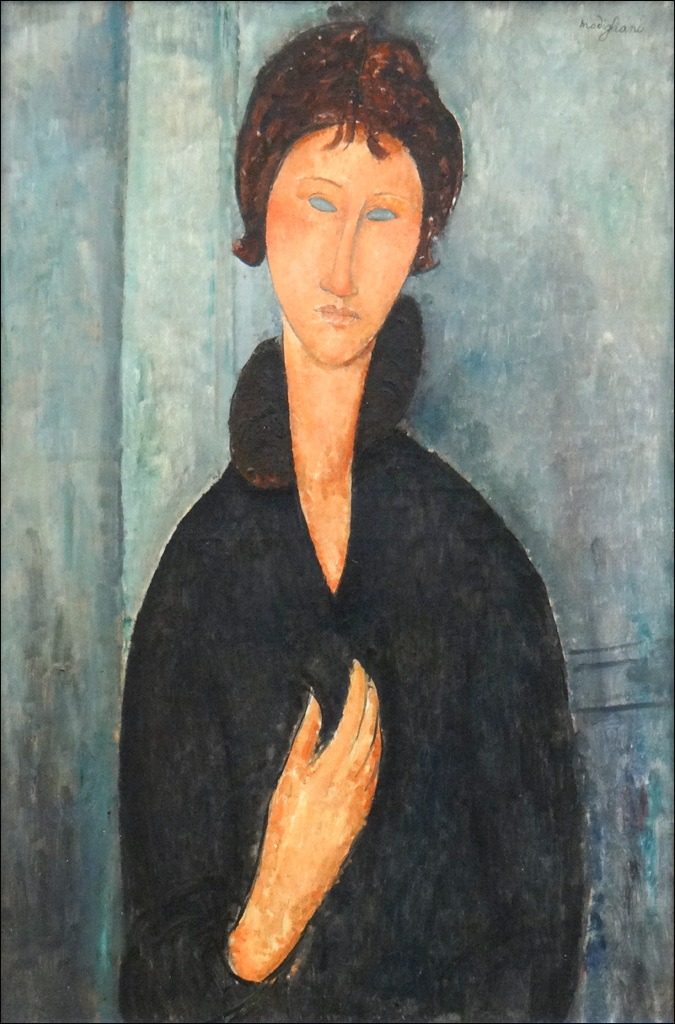Amedeo Modigliani
Fundamental Paintings to Understand the History of Painting
We could make this publication thanks to small donations. How is 3 minutos de arte supported?
Woman with Blue Eyes, 1918. Amedeo Modigliani
Oil on canvas. 81 cm x 54 cm
Musée d’Art Moderne of the Ville de Paris. France
Modigliani painted only the human figure: portrait and nudity. And with absolute synthesis achieved a moving and mysterious expressivity.
When contemplating his works, we feel the hypnotic effect of those penetrating, almond-shaped eyes characteristic of his style. He considered the eyes as the “doors to the soul” and he dared paint them even without pupils as in the work we have chosen.
Modigliani’s most famous paintings are those portraits of characters with empty gazes that are not empty, but full of an enigmatic calmness.
Amedeo considered himself more a sculptor than a painter. Maybe that is the reason why he avoided details and gave a reference of the ambient. Everything is simplicity: few lines, elegantly “elongated” forms, a color without stridencies —proper of that time— and almost without contrasts between lights and shadows.
We can say that those oval faces, long necks and elongated bodies have a “primitive purity” that the artist achieves by getting inspiration in the African sculpture and Cubism (which in fact is also very influenced by African sculpture).
The other influences we can observe in his portraits are Klimt (the sensuality and elegance of the slim silhouettes), Picasso (Cubism and the Blue period) and the Japanese woodblock prints (the women Utamaro painted).
Modigliani is one of the “damn painters.” He led a frenetic life, full of excesses, violence and torments. He is one of the painters that as cannot be pigeonholed in a movement is placed in the School of Paris.
Artists like him, who dazzled with his work but turned out to be more fascinating due to his indomitable character and bohemian, romantic and tragic life (full of love affairs, drunkenness and street fights), have built the stereotype of what an artist is: the character whose sensibility and passion for life turn him in a tormented marginal person. Something that makes us think of modernity, where the artist’s world view, his way of seeing and living life prevails, to the point of generating the provocative idea that says that “when we buy a painting, we are not buying art, but the artist.”
Recommended links:
Modigliani and the Modern Nude.
Modigliani and Beatrice Hastings.
You can also find more material using the search engine.




0 Comments